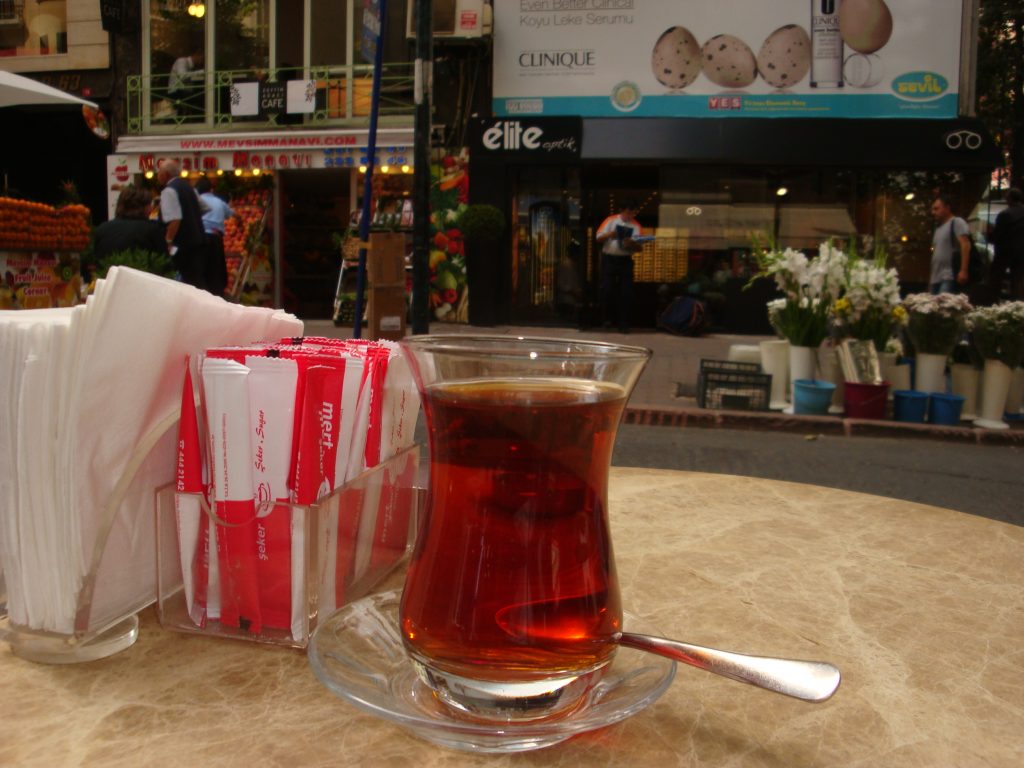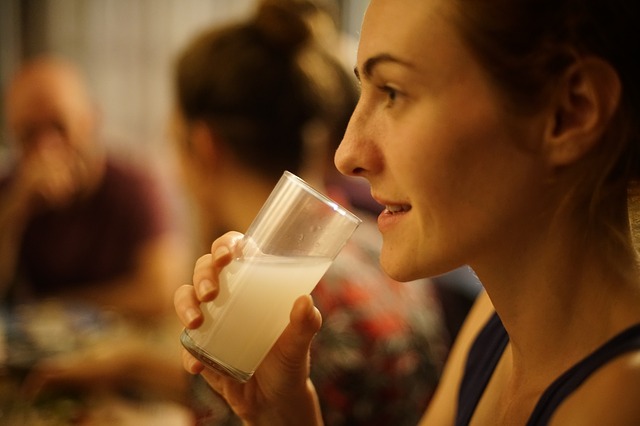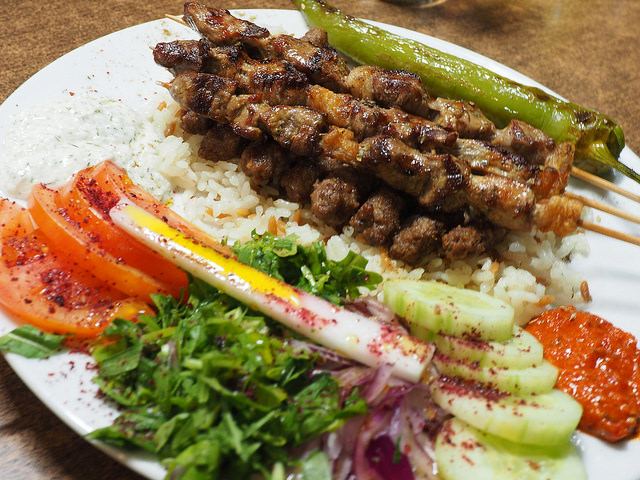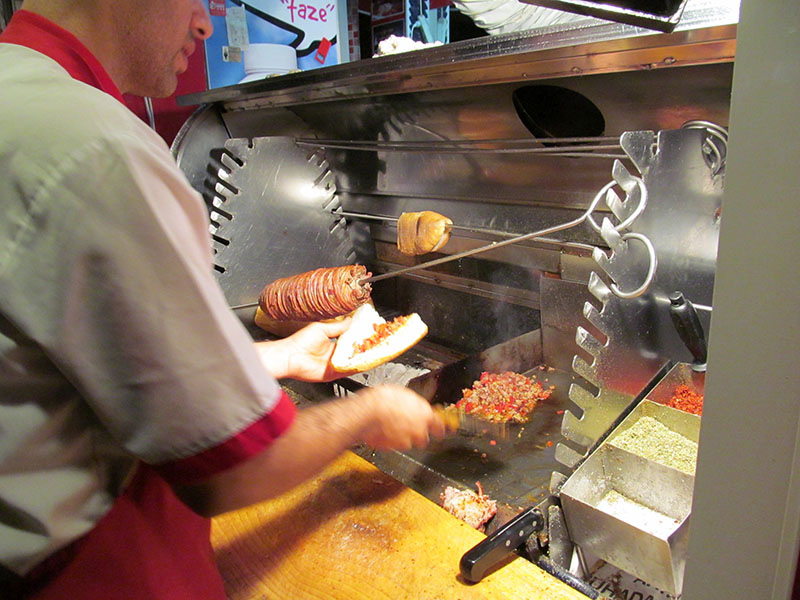Main Body
Chapter 10 Turkish Cuisine
by Kerem Postacıoğlu
Turkish cuisine is remarkable for its immense diversity. It is based on Ottoman and Seljuk food culture and influenced by surrounding countries and regions. During the time of the Seljuks and Ottomans, Turks managed to control some parts of the spice route, which gave them an economical advantage and also impacted the food culture significantly. Although common recipes changed and modernized over time, many of them still contain the original flavors traced back to Ottoman and Seljuk roots.
Turkish breakfast is one example of the diversity found in Turkish cuisine. A standard breakfast will include many different types of cheeses, jams, and breads, as well as honey and cream, sausage, eggs, menemen, sigara boreği, and most importantly, tea. Breakfast in Turkish (kahvaltı) means “before coffee,” so coffee is not a part of this meal.
Tea is one of the the most-consumed drinks in Turkey. Tea is grown in the Karadeniz region in the northern part of Turkey, due to high precipitation that favors its growth. The most valuable tea is called “two and a half tea,” which is made from the top and the two rows of leaves below it on the tree. These leaves get the most sunlight, so their taste is more flavorful than the rest of the leaves. Turkish tea is always served in a transparent glass called ince belli bardak to show its color. Turks indicate the exact strength of tea they prefer with specific designations – these can then be observed through the transparent glass in which the tea is served.

When discussing Turkish food and drink, it is also important to mention rakı, an alcoholic beverage that many consider to be Turkey’s national drink. It is made by distilling raisin and aniseed, has a dark liquorice taste, and its alcohol level is 80-100 proof. After a certain amount is poured into a glass, the rakı is diluted with water and turns white. Since there are particular rules to drink it, rakı is not like any other drink. Turks refer to it as “lion’s milk,” due to it being a strong alcoholic beverage that is the color of milk.

Meze is the general name for small appetizers served with either rakı or fish. Meze is another example of diverse Turkish food, ranging from yogurt based to meat based. There are also vegetarian selections made from lentils or other legumes. The main goal of eating meze is not to fill the stomach, but to try and enjoy many different tastes.
The main courses in Turkish cuisine are as diverse as its breakfast and meze menu. The most recognizable ones are: İskender, pita topped with meat, tomato sauce, and melted butter; mantı, Turkish ravioli that resembles dumplings with meat inside, served with yogurt and oil sauce; adana, meat on a skewer served with greens and tomatoes; and lahmacun, thin pizza crust topped with minced meat. Most of Turkish food is meat-based due to the nomadic roots of Turkish culture. Turkic nomadic tribes couldn’t depend on crops, but rather placed an emphasis on pastoral foodstuffs they could take with them on their journeys, including sheep and other animals.

This is an example of a Turkish main course meal called şiş kebap.
Some of the popular street food in Turkey includes söğüs, kokoreç, and midye dolma. Unlike the U.S., organ meats are very popular in Turkey and tend to sell out at restaurants and butchers. Sögüs is made from a lamb’s tongue, eyes, cheeks, and brain, and served wrapped in a pita with added greens and spices. Kokoreç is lamb intestines that are cleaned and cooked over fire and served in bread with lots of spices. Midye dolma is clam shells stuffed with rice and can be found being sold on the streets throughout the day and into the evening.

Desserts and coffee are another important part of Turkish cuisine. Baklava and Turkish delight, or lokum, are the most internationally-known desserts. Baklava is a pastry with pistachios or almonds and syrup. These desserts are generally served with Turkish coffee, which is a particular way of preparing unfiltered coffee. Another fun fact about Turkish coffee is that it is also used for fortune telling by interpreting the shapes of the grounds left in the cup after drinking.
The topic of food is tied to cultural identity and therefore not devoid of political meaning. In Greece, Turkish coffee was referred to as “Turkish” until the Cyprus incident and political conflicts between two countries in the 1960s caused the Greeks to change the name of the drink to “Greek coffee.” Baklava is another food which is contested in the Mediterranean and Western Asia with regard to cultural ownership.
Works Cited
Türk Mutfak Kültürü. Retrieved from http://www.turkosfer.com/turk-mutfak-kulturu/
Türk Kahvesi. Retrieved from https://www.kahve-lekesi.com/turk-kahvesi-tarihcesi
